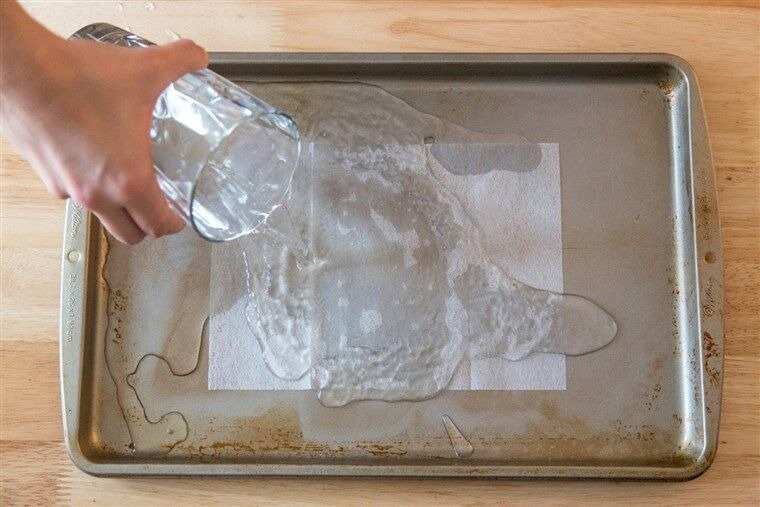ADVERTISEMENT
Cleaning baking sheets and shallow baking dishes is a chore that many of us face regularly. Over time, these kitchen staples can accumulate stubborn food residue and unsightly stains, detracting from their appearance and potentially affecting their performance. While the market is flooded with specialized cleaning products that promise to tackle this problem, there’s a more economical and environmentally friendly solution right in your kitchen. This guide will explore a simple, yet effective, method to restore your cookware using just three common household items: vinegar, baking soda, and boiling water. Not only is this approach cost-effective, but it also avoids the harsh chemicals found in many cleaning products.
The Magic Trio: Vinegar, Baking Soda, and Boiling Water
Why These Ingredients?
Vinegar is a natural acid (acetic acid) that effectively breaks down grease, grime, and mineral deposits. It’s a staple in eco-friendly cleaning due to its disinfectant properties and ability to dissolve tough stains without harming surfaces.
Baking Soda (sodium bicarbonate) is a mild alkali that can dissolve dirt and grease in water. Its abrasive texture helps scrub away stubborn residue without scratching the cookware.
Boiling Water accelerates the chemical reaction between vinegar and baking soda, helping to loosen and lift hardened food particles and stains.
Step-by-Step Guide to Sparkling Cookware
Preparation
Gather Your Materials: Ensure you have enough vinegar (distilled white is best), baking soda, and access to boiling water. You’ll also need a scrub brush or sponge, and possibly gloves to protect your hands.
The Cleaning Process
Coat with Baking Soda: Begin by liberally sprinkling baking soda over the entire surface of your baking sheet or pan, ensuring that you cover all the stained areas, especially the corners and edges where buildup tends to be most stubborn.
Apply Vinegar: Slowly pour distilled vinegar over the baking soda. You’ll notice it starts to fizz and bubble, a reaction that helps to break down the grime. Ensure the entire surface is evenly coated, allowing the vinegar to react with the baking soda.
Add Boiling Water: Carefully pour enough boiling water into the pan to fully submerge all areas of concern, ensuring that the mixture can reach every nook and cranny. The heat from the boiling water will further activate the baking soda and vinegar, enhancing their cleaning power.
Let It Soak: Allow this potent mixture to work its magic for about an hour. This soaking time is crucial for the solution to penetrate and loosen the tough stains and burnt-on food residues.
SEE NEXT PAGE
ADVERTISEMENT
